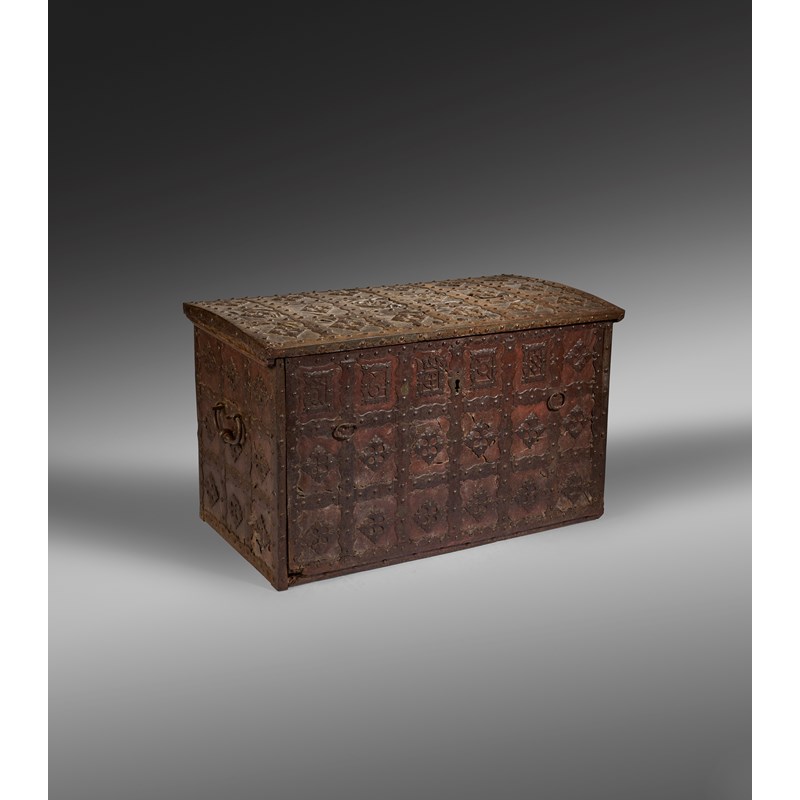Furniture, Works of Art & Clocks - 04 Apr 2023
A RARE DANISH CHRISTIAN IV ROYAL BALTIC OAK...
A RARE DANISH CHRISTIAN IV ROYAL BALTIC OAK LEATHER AND IRON BOUND CHEST
DATED '1608'
the slightly domed hinged cover externally divided into squares containing cut and engraved iron foliate motifs above a sliding front panel with two iron handles divided into rectangular panels, the top row enclosing the date '1608' flanking the Royal Cypher, the remaining with quatrefoil foliate motifs, the sides similarly decorated with the foliate motifs and cast iron swing carrying handles, the back also similarly decorated, the front panel sliding out to reveal a deep compartment above two long drawers with pink silk quilted lining worked with silvered thread with the Royal Cypher surrounded by flowerhead and strapwork motifs, the drawer fronts with the remains of red or pink staining
57.2cm high, 92cm long, 48.5cm deep
Exhibitions
Both this and the following lot were included in an exhibition titled 'Christian IV and Europe - The 19th Council of Eurpoe Exhibition, Denmark 1988, numbers 394 and 395 with one chest being illustrated in the Exhibition Catalogue. Both chests were listed as being loaned from an English Collection with one being bought from Christies in 1974 and the other from a London dealer. There was, however, some uncertainty as to which chest came from Christes and the other from a dealer.
Literature
Christian IV and Europe, The 19th Council of Eurpoe Exhibition, Denmark 1988, Foundation for Christian IV Year 1988, pp118-119, items 394 and 395 and illustration 394.
Catalogue note
Anne of Denmark (1574-1619) was the daughter of Frederick II of Denmark and sister of Christian IV of Denmark. She was married to the then James VI of Scotland, in 1589 at the age of 14 with whom she had eight children of which only three survived to adulthood, including the later King Charles I. When the Scottish and English crowns were unified in 1603 and James became James I of England and Ireland, Anne also became Queen of England and Ireland. While the marriage remained strong until the early 17th century, it slowly desintegrated so that by the end the couple where living virtually separate lives, albeit amicable. A note in the Exhibition Catalogue suggests that the chests may have been given as gifts from Christian IV to James I in 1608. This idea could well have come about due to the use of Tudor style roses in the decoration but no suggestion is given, nor has any subsequently been found, as to what may have precipitated this act of generosity given that the marriage, to all intense and purposes, was over by 1607.





 Live online bidding is available via our own
Live online bidding is available via our own